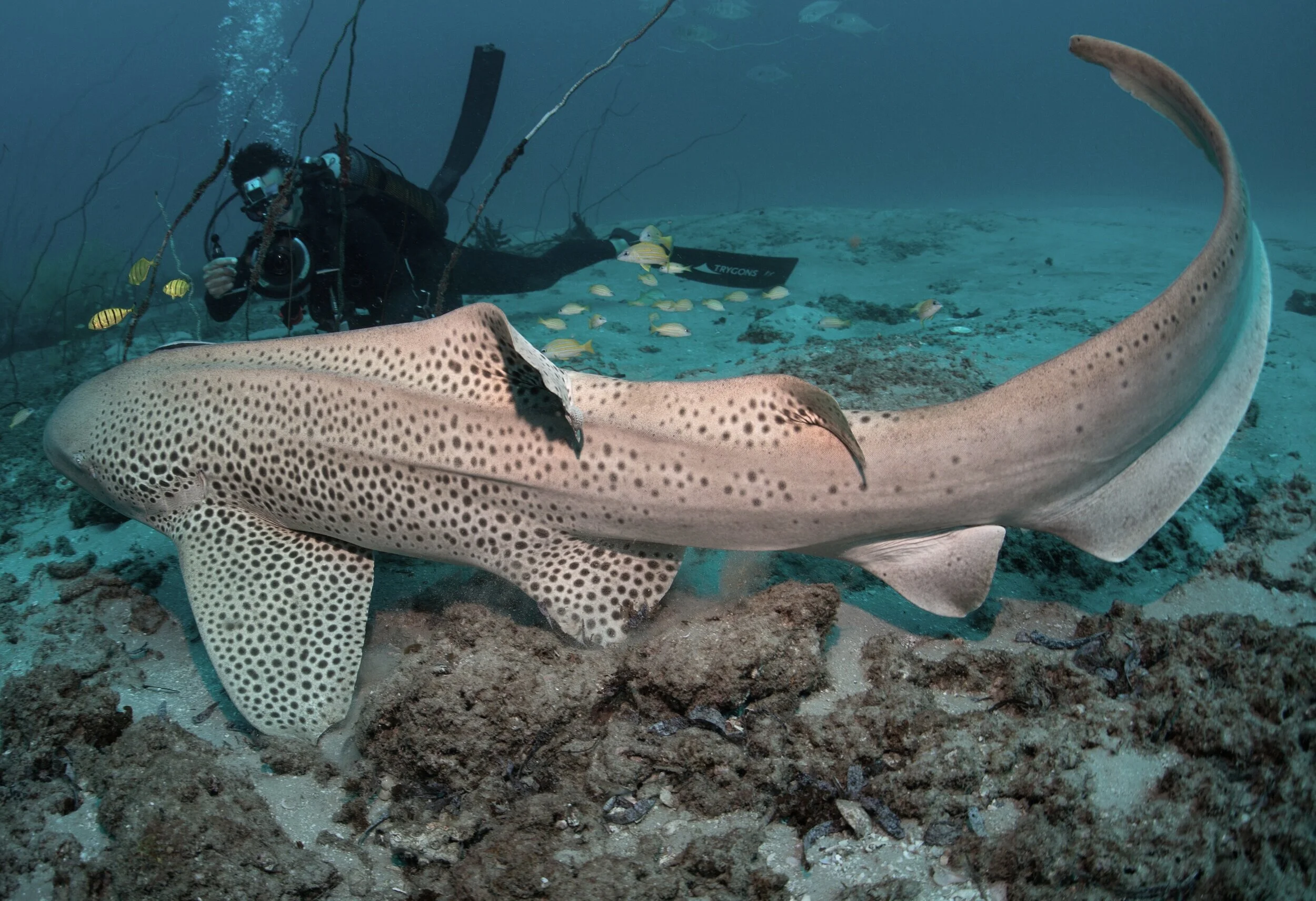
Mozambique Projects.
Leopard Sharks
What’s this project about?
The Indian Ocean – Southeast Asian leopard shark population is thought to have declined by at least 50% over the past 50 years. The species is now listed as globally endangered. The Indian Ocean has been highlighted as a data deficient area for the species.
This project will focus on better understanding the seasonality, distribution, and habitat use of leopard sharks in southern Mozambique, and defining priority areas for protection.
Key successes to date
MMF has compiled the first photo-ID catalog for leopard sharks in Southern Africa.
MMF scientists have completed the first focused photo-identification study on leopard sharks in Mozambique.
Numerous aggregation sites for leopard sharks have been identified throughout the Inhambane Province, positioning our team to do focused research on the species in Mozambique.


Project Overview.
Leopard sharks (Stegostoma tigrinum, formally S. fasciatum), also known as zebra sharks, are found through the Indian and western Pacific Oceans. In 2016 the species was reclassified as globally Endangered on the IUCN Red List as a consequence of heavy fisheries throughout much of their range. This harmless species has now completely disappeared from large areas in their broad distribution.
Leopard Shark Conservation
Extensive fishing pressure, coupled with low reproductive rates, has led to steep population declines in leopard sharks, with the Indian Ocean-Southeast Asian subpopulation suspected to have been halved by overfishing. Leopard sharks choose to aggregate in specific areas which, when targeted by unsustainable fisheries, can quickly lead to local extinctions.
Research Needs for Leopard Sharks
So far, studies on leopard sharks have mostly focused on Australia and Thailand. The Indian Ocean, in particular the eastern coast of Africa, has been highlighted as a data deficient area. Knowledge of the distribution and population status of leopard sharks in this region is vital for the effective management and protection of remaining populations.
Leopard Sharks in Mozambique
Leopard sharks are commonly seen in southern Mozambique with several aggregation sites noted along the Inhambane coastline. Inshore reefs in this region appear to be important habitats for this bottom-dwelling shark but focused research is needed to understand more about local populations and their most significant threats in the area.
Objectives.
We plan to expand our monitoring efforts across all sites where these sharks are commonly encountered, with a focus on exploring new areas in Zavora, Morrungulo, Pomene, and the Bazaruto Seascape.
The use of advanced telemetry techniques also allows us to remotely study leopard shark movements and habitat use through the year to identify their most important habitats along the Inhambane coastline. We are also investigating leopard shark genetic connectivity through the Indian Ocean collecting samples for biochemical diet and movement assessment.
Project Leaders
Dr Andrea Marshall
Principal Scientist
Andrea has been conducting research on marine megafauna in Mozambique for 20 years, with an emphasis on sharks and rays. As a conservation biologist she focuses predominantly on research questions related to the effective management and conservation of threatened species.
Dr Stephanie Venables
Senior Scientist
Stephanie has been working with MMF since 2014. Her research involves applying different research techniques as conservation tools, using methods such as telemetry (tagging), population genetics, and demographic modeling to better understand species and the way they interact with their environment.
Anna Flam, MSc.
Research Manager
Anna is MMF’s research manager in Tofo Beach. She also manages the Thailand/Myanmar manta ray database and serves as the global coordinator for MantaMatcher. Anna’s work involves collecting vital information on shark and ray population size, structure, and connectivity, which is used to guide the development of effective management and conservation strategies.
Publications
Saoirse Pottie (2018) The distribution and site fidelity of a rare, non-commercial elasmobranch. MSc thesis. Swansea University, UK.
Further Reading








